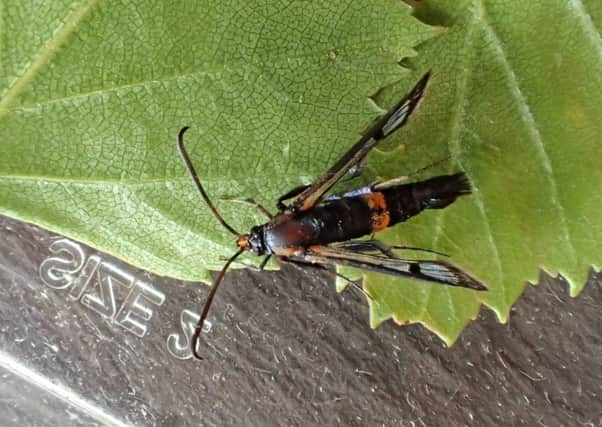Rarely seen clearwings finally show their faces at Spottiswoode


Over the past two years I had found the empty pupal cases where the adults had hatched out but had never managed to see the insect itself. I had even tried pheromone lures to try to attract the males, but without success.
According to the literature, the insects fly only on hot sunny days in late May and early June, so this year I was determined to keep a watchful eye on the recently-cut stumps.
Advertisement
Hide AdAdvertisement
Hide AdThe welcome spell of hot weather seemed perfect so I prepared for a long wait. I patrolled the birch stumps armed with net and camera - though taking care to avoid a Woodcock’s nest with four eggs which I had found under a heather clump - I had almost trodden on the sitting bird before it got up.
One day, to my great surprise, I caught a fleeting glimpse of a clearwing near a stump but before I could catch it or take a photograph it vanished and did not re-appear.
I thought I had missed my chance! However, over the next three days I had more luck and I managed to catch and photograph several females which had landed on stumps.
On releasing one back on a stump it did not fly off but crawled over the cut surface waving its abdomen back and forth sideways as though feeling for a crevice and then promptly laid two tiny eggs before flying off. I had witnessed a very private moment! The eggs were brown with a rough scurfy surface.
Advertisement
Hide AdAdvertisement
Hide AdLater I checked out other stumps and found eggs on many of them. The insects had been busily egg-laying, and our efforts were at last rewarded.
On hatching, the young caterpillars will burrow into the wood just under the bark and gradually fatten up over two years, hidden inside the stump, before forming a chrysalis and then emerging as an adult.
Clearwings are very elusive insects, rarely seen in Scotland. One species, the Currant Clearwing, has recently been seen in a garden in Selkirk, where its caterpillars live inside the older stems of currant bushes. Another, the Lunar Hornet Clearwing, lays its eggs on the base of old willow trees.
Woodpeckers regard the caterpillars as a tasty meal and holes made by woodpeckers can sometimes be seen around the bases of old willows. In this species the adult mimics a large wasp with black and yellow stripes, a cunning defence to protect them from predators.